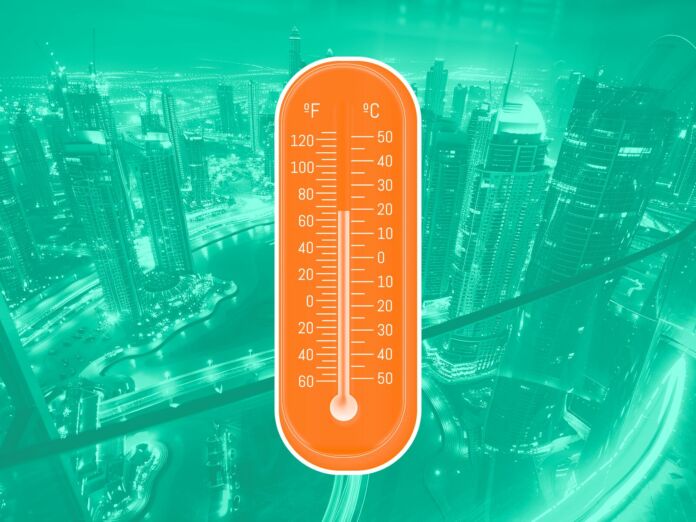
Ellie Gabel – August 29, 2024
Collected at: https://www.iotforall.com/optimizing-urban-climate-with-real-time-temperature-control-systems-in-smart-cities
Climate control is becoming increasingly crucial in urban environments as cities grapple with rising temperatures, energy consumption, and sustainability. Real-time temperature control systems are pivotal in this context. They offer smart cities an efficient way to manage and optimize their climates.
By leveraging IoT technology, these systems collect and analyze vast amounts of data and enable precise adjustments to urban temperatures. These factors enhance energy efficiency and improve the comfort and health of city dwellers. Advanced analytics and machine learning further refine these adjustments and ensure temperature control is responsive and predictive.
The Role of Real-Time Temperature Control Systems
Real-time temperature control systems harness IoT technology to collect and process data continuously and ensure optimal climate management in urban settings. With the U.S. experiencing about six heat waves annually since the 2020s, the need for effective temperature regulations has never been greater.
These systems deploy sensors across various infrastructures to gather real-time data on temperature, humidity, and energy usage. Meanwhile, centralized management allows seamless integration of this data, enabling city planners and administrators to make informed decisions and implement immediate adjustments. This comprehensive approach ensures that public buildings, transportation systems, and other urban facilities maintain ideal conditions.
Benefits of Optimizing Urban Climate
Temperature control systems reduce energy consumption by making precise adjustments based on current environmental conditions and usage patterns. Considering that nearly half of a household’s energy bill in the U.S. shoulders heating and cooling, these systems offer substantial cost savings. Continuously monitoring and responding to temperature fluctuations ensure users utilize energy efficiently and avoid the waste of overcooling or overheating spaces.
Moreover, maintaining optimal temperatures impacts public health and comfort. Consistent indoor climates help prevent heat-related illnesses during extreme weather and reduce the strain on the body from sudden temperature changes. This enhances the overall well-being of residents and contributes to a more sustainable and comfortable living environment.
Components of Real-Time Temperature Control Systems
These systems utilize temperature, humidity, and occupancy sensors to gather comprehensive environmental data. The sensors monitor conditions such as air temperature, moisture levels, and people’s presence to provide a constant stream of real-time data. Advanced analytics are crucial in processing this data, identifying patterns, and predicting future temperature needs based on weather forecasts and historical usage trends.
This predictive capability allows the system to anticipate and respond to changes efficiently. Actuators also make necessary adjustments by opening or closing vents, adjusting thermostats, and regulating airflow. Such seamless integration ensures indoor environments remain comfortable and energy-efficient at all times.
Technological Innovations Driving Real-Time Temperature Control
Recent advancements in sensor technology have enhanced data accuracy and reliability in real-time temperature control systems. Innovations like high-precision digital sensors and multi-sensor arrays provide more detailed and accurate environmental readings. With the evolution of AI and predictive algorithms, these improvements have made systems more responsive and efficient.
For example, AI can now analyze vast data sets to predict temperature needs more accurately, allowing swift adjustments and optimizing comfort and energy use. Meanwhile, in smart HVAC systems, automatic adjustment and usage analysis reduce energy waste and ensure the system operates at peak efficiency.
Challenges and Limitations
Scaling real-time temperature control systems in large urban areas presents several challenges. One significant hurdle is managing the vast amounts of data collected and processed from numerous sensors across the city. This data deluge requires robust infrastructure and advanced analytics to ensure timely and accurate decision-making.
Additionally, the proliferation of connected devices worldwide raises consumer privacy and security concerns. The increased number of devices provides more opportunities for malicious actors to breach systems and access sensitive information. Integrating these advanced systems with existing legacy infrastructure also poses difficulties, as older buildings and systems may not be compatible with new technologies.
Driving Innovation and Sustainability
Builders and thought leaders must consider implementing real-time temperature control systems in their projects to enhance energy efficiency and occupant comfort. Adopting these advanced technologies can create smarter, more sustainable urban environments that meet modern living demands.

Leave a Reply